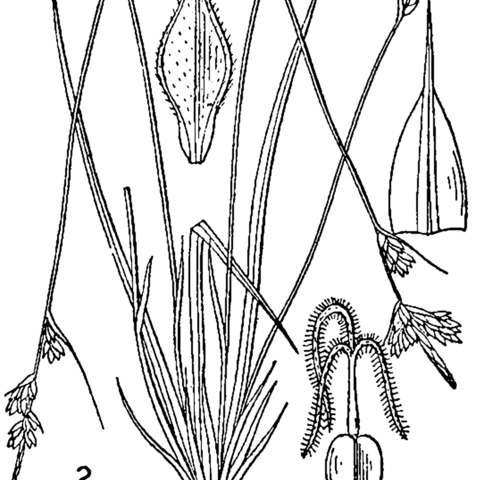Densely cespitose; lvs 0.5-2.5 mm wide; terminal spike staminate, 4-14 mm; pistillate spikes (1)2-3(4), sessile, 2-7 mm, ± closely aggregated and overlapping; lowest bract usually shorter than the infl; pistillate scales green, or with a purple strip on each side of the broad green center, ovate or lance-ovate, acuminate or cuspidate, to as long as the perigynia, but distinctly narrower above; perigynia 4-12, dull green or yellowish-green, puberulent, 2-3.5 mm, slightly flattened, narrowly obovoid above a stipe-like base, 2-keeled, abruptly contracted into a slender beak 0.5-1 mm; achene rounded-trigonous; 2n=40. N.S. to Fla., w. to s. Ont., Mich., Wis., Nebr., and Okla. Two vars. with us.

